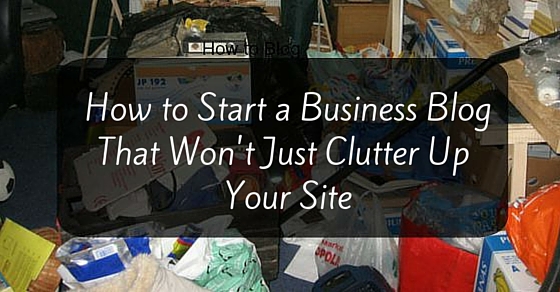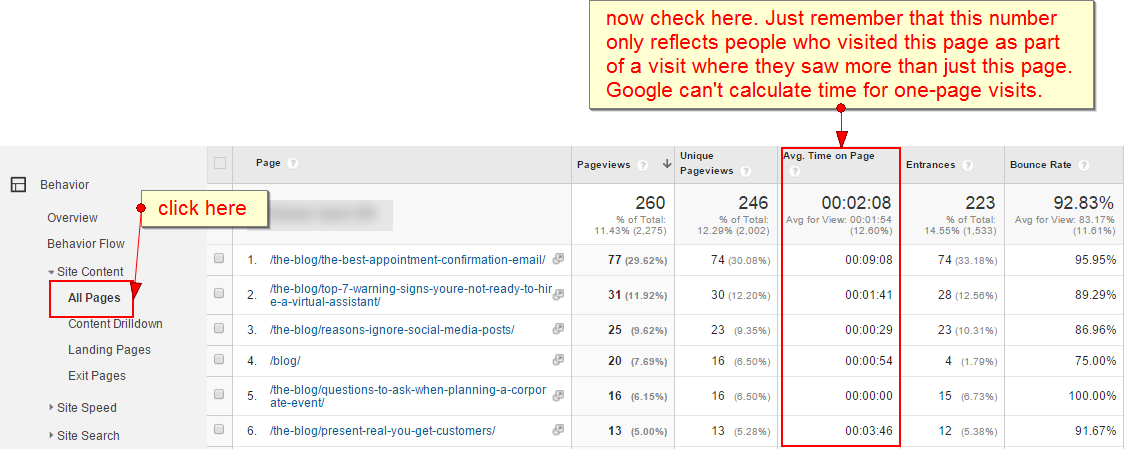How to Start a Blog for Your Business that Won't Just Take Up Space on Your Website
Make your blog matter
That’s it. You’re starting a blog for your business. You’ve pushed it off, but it’s time. Because “everyone knows” that companies need blogs. Right? After all:
- B2B marketers that use blogs receive 67% more leads than those that do not. (Hubspot)
- Companies who blog receive 97% more links to their website. (Hubspot)
- 92% of companies who blog multiple times per day have acquired a customer from their blog. (HubSpot)
Those are the stats everyone pushes around the internet.
BUT what they don’t talk so much about is that while 77% of companies have blogs, 85% of those blogs have 5 posts or less. (IBM) In other words, most blogs peter out and die before they achieve anything.
It’s easy to start. It’s not so easy to keep up the steam when things get busy and when you don’t see results right away.
So how do you get your business blog off to a running start? How can you set yourself up for a good chance that it will bring positive ROI and not peter out from lack of attention and lack of success?
Don’t talk about you.
Who is reading this blog – you or the customer? People want to see and hear about themselves (note the prevalence of selfies). You need to do some “selfie” writing – but reflective of your customer, not yourself. What are their concerns? Their fears? Their hopes?
Here’s a hint to see if you’re focusing enough on your reader: count the “you”s vs. the “we/I” in the copy. (Ctrl+F works wonders.) The “you”s should have it – by a long shot.
Don’t be afraid to take a stand.
No one raves about vanilla ice cream. Maybe French Vanilla Supreme. Even better: Madagascar Vanilla Bean With Pieces of Chocolate Covered Madagascar Hissing Cockroaches. Well, proponents of entomophagy might rave about that one. Everyone else would probably hiss in dismay. Either way – you’re getting people emotionally involved, which will make your blog meaningful and memorable.
Mix your media.
You could write a 500 word post every time, but why not vary it? Short form, long form, videos, infographics, podcasts… variety is the spice of a blog. This is best at the beginning, when you’re starting out. After a while, you can check in your Analytics which posts draw readers the most and keep them on site the longest, and plan accordingly.
Which brings us to…
Always be analyzing.
If you just publish, you’ll perish. You need to check the feedback and respond. If your readers leave comments or contact you with suggestions, you’re lucky. But if they don’t, you have Google Analytics. It’s free, and pretty easy to get on your site. Make sure it’s there from the outset. After a few months, see which posts attract readers (landing pages).
And which keep them riveted (time on page). This one’s going to be a little hard to figure out, because if the bounce rate is high (they read only that page and left), it’ll be skewed downwards.
Good cover image.
A picture is worth 1000 readers (or something like that). Make sure you have a striking image to start out your blog post, and that will show up when the post is shared on social media. We use Pixabay for finding great attribution-free images and Canva and PicMonkey for creating the composite image with text.
Keep it current.
Write about current events in your industry – with your own take or practical advice. One of my clients wrote about the deadline for medical professionals to opt-out of Medicare (right before the deadline). That post received the most people clicking through from social media out of all their posts, and a significant amount of traffic from Google Search. If it’s a big deal, your industry will be searching for information. Be there for them to find.
Share it on social media.
Your blog is kind of like Las Vegas: what happens there, stays there – unless you make an effort to get the word out. Share it on Facebook. Tweet your post, and use appropriate hashtags so more people will find it. Post it as a LinkedIn status update and share it on LinkedIn groups where you’re a member. Just don’t spam the groups by posting the same post with the same subject line and description to 20 groups in the same day. The chances of someone ticking the spam box and getting you moderated are much higher that way. Post in a few groups every day, and try to vary the text you post with.
Be genuinely helpful.
Your customers and potential customers have questions. About your company. About your industry in general. Answer them. Set yourself up as a great information source. Marcus Sheridan tells about how he pulled his floundering company (River Pools) into profitability (during a recession) by writing posts about questions people commonly asked about fiberglass pools. How to get started? Barry Feldman has a great (and really easy to follow process) on how to create tons of content that answers your market’s burning questions.
You now have the ingredients to produce a blog that will produce results – not just more code to hang around the web. Go for it! And if you find these tips bring you traction, post your blog in the comments – we’d love to see what you’ve built.
(And if you want to take your blog and web content to the next level, check out our free e-book: The Insider’s Guide to Digital Marketing – All the Tools You Need. Blogging, SEO – it’s all there, in a DIY easy-to-follow format.)
 Submitted by Aviva
Submitted by Aviva



